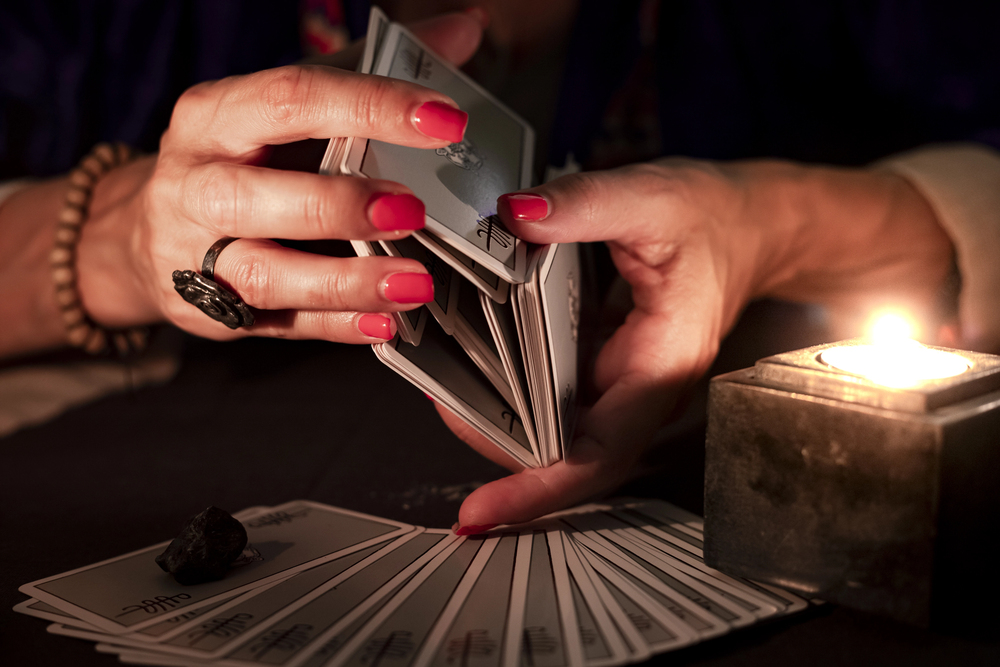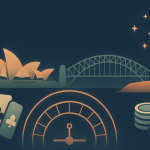Playing card decks serve purposes beyond traditional games; they are also employed in practices like cartomancy and are believed by some to facilitate connections with the spiritual realm.
Playing Card Decks Beyond the Veil

Playing Card Decks Beyond the Veil
by Alex J. Coyne © Great Bridge Links
Playing card decks can be used for a game of bridge or poker, but also has applications for cartomancy (card reading) and supposed contact with spirits or the afterlife. Card decks can connect its holder with their greater self, or provide guidance when you’re looking for randomized or intuitive answers.
Over the centuries, playing cards have picked up more than just dust—they’ve gathered stories, superstitions, and the occasional ghost. From haunted halls to cursed cards, history is filled with eerie anecdotes linking card decks to the paranormal. Some believe certain cards carry omens, while others recount chilling tales of ghostly players and fatal wagers. Whether used for fortune-telling or whispered about in folklore, playing cards often seem to hold more than ink and paper—they hold secrets.
Here’s more about playing card decks beyond the veil, including how to read traditional card decks the same way as tarot.
Reading the Tarot (With Playing Cards)
Tarot cards are the first choice for many spiritual practitioners, but what do they reach for when a tarot deck is unavailable? Traditional playing cards can still be used for readings, with each card and suit corresponding to a particular tarot-bound meaning. Here are some resources to help you make use of your bridge deck when you’re away from the table.
Ana Cortez and The Playing Card Oracles: Author of The Playing Card Oracle, Ana Cortez, provides some of her best tips in a YouTube series. Along with her father, C.J. Freeman, Cortez developed a unique system of divination using traditional playing cards, detailed in her book. Her official store offers related products, including card decks and books
More reading tutorials for traditional playing card decks can be found via YouTube, like this one from PrayNite Tarot.
You don’t technically need a tarot deck to read the cards!
Zak Bagan’s The Haunted Museum
Las Vegas is one of the world’s most famous card playing hubs. Vegas is also where you’ll find Zak Bagan’s The Haunted Museum—a location that’s described as having “the world’s most haunted artifacts and cursed objects” in its collection.
The host of Ghost Adventures promises oddities and various other haunted curiosities to any interested visitors.
Visit the store, and you can find the official tarot deck inspired by haunted local scenery. The store also sells this poker-themed skull—y’know, just in case that’s exactly what your card room currently needs.
Playing Card Ghost Stories
The Curse of Scotland
The “Curse of Scotland” refers to the nine of diamonds playing card, which has been associated with various ominous events in Scottish history. One story claims that the Duke of Cumberland (nicknamed “the Butcher”) issued the order for the massacre after the Battle of Culloden written on a nine of diamonds card. This card then became associated with bloodshed and betrayal. Another theory links the card to the nine diamonds in the Scottish royal coat of arms of the Dalrymple family, specifically John Dalrymple, the Earl of Stair. He was associated with the 1692 Massacre of Glencoe, which many Scots viewed as a betrayal. The “nine diamonds” in the family’s arms may have symbolically transferred to the playing card. Card Game Theory suggests that in early card games played in Scotland, the nine of diamonds was a losing card or played a negative role, contributing to its bad reputation. Most bridge players have heard of
The Mysterious Gambler
A recurring motif in folklore involves a mysterious stranger joining a card game, only to be revealed as a ghost or the devil. One such story recounts men playing cards at a pub named after a deceased individual whose portrait hung on the sign outside. A stranger joins the game, wins significantly, and later is discovered to resemble the person in the portrait, suggesting a supernatural encounter.
The Queen of Spades
In Alexander Pushkin’s 1834 novella “The Queen of Spades,” the protagonist, Hermann, becomes obsessed with learning a secret gambling strategy known only to an elderly countess. After a series of events leading to the countess’s death, her ghost appears to Hermann, revealing the winning cards: three, seven, and ace. However, when Hermann attempts to use this knowledge, he mistakenly bets on the queen of spades, leading to his ruin and descent into madness.
The Haunting of Loftus Hall
Loftus Hall, located on the Hook Peninsula in County Wexford, Ireland, is renowned for its eerie history, particularly an incident involving a game of cards. In 1775, during a stormy night, Charles Tottenham, his second wife, and his daughter Anne were residing in the hall when a ship unexpectedly arrived at the peninsula. A young man from the ship sought refuge and was welcomed into the mansion. As the story goes, the family and their guest were engaged in a game of cards when Anne dropped one of her cards and bent down to retrieve it. Upon looking under the table, she was horrified to see that the guest had a cloven hoof instead of a foot. Realizing his identity had been discovered, the mysterious man is said to have shot up through the roof in a ball of flames, leaving behind a large hole in the ceiling. This traumatic event allegedly led to Anne’s mental decline, and she spent the remainder of her life confined to the Tapestry Room, where she eventually died. To this day, Loftus Hall is considered one of the most haunted houses in Ireland, attracting visitors intrigued by its chilling past.
Ghost Stories Playing Cards
There are many ghostly and spiritual card decks out there, here are some we thought were particularly intriguing.
Ghost Stories Playing Cards
Rare Playing Cards sells these Ghost Stories Playing Cards, which could make an excellent addition to your collection as a reader of spooky tales—or a gift for anyone who can’t put down eerie stories.
Cards are perfect for late-night games that could use some horror-based inspiration.
The Ghost and Spirit Tarot Deck
Tarot decks have historical links to the occult and crossing into other intuitions – though if your personal style leans towards ghosts and hauntings, The Ghosts and Spirits Tarot Deck might be exactly what you’re looking for.
Cards are inspired by traditional spectres, spirits, and ghosts.
For most readers, tarot decks are a very personal thing, and readers have to connect with its imagery. Is this the deck you’ve been looking for?
Haunted Walk Contact Cards
Haunted Walk Contact Cards takes cards to a whole new level, and promises the cards might help tap into your deeper intuition. While not a traditional deck, they’re one that many card players may want to have in their collections.
The Haunted Walk Contact Card deck contains 20 Zener cards to test your premonition abilities—and 32 response cards that can be drawn from the deck to indicate answers from the beyond.
Its description compares the cards to a Magic 8-Ball or Ouija Board, starting with Yes/No/Maybe answers to your questions.
Zener Cards: Extrasensory Perception… Or Not?
Zener cards—named for only one of the pair who invented it, J. B. Rhine and Karl Zener—first appeared in the 1930s as a supposed means to test for extrasensory perception (or ESP).
Cards contain 25 different images, which are randomly placed face-down while participants are asked to guess their order.
If someone scores higher than average (or the probability of guessing), they are believed to pass the test.
While the Haunted Walk Contact Cards combine Zener cards with others, you can still purchase 25-card decks on their own. Thanks to the internet, you can also find Zener cards online.
A Gothic Witch’s Oracle
A Gothic Witch’s Oracle is an oracle card deck created by author Raven Digitalis and photographer John Santerineross. Featuring various cards inspired by gothic themes and images, it’s meant to connect readers with their darker (and deeper) selves through practical advice on each card.
Ask a question, and draw a card. The deck contains 40 full-color cards with a 60-page guidebook for readers to look up the specific further meaning of the cards they’ve drawn.
Gifts for Mystics dot com
This amazing website is full of articles and resources for card lovers, cartomancers, and collectors.








